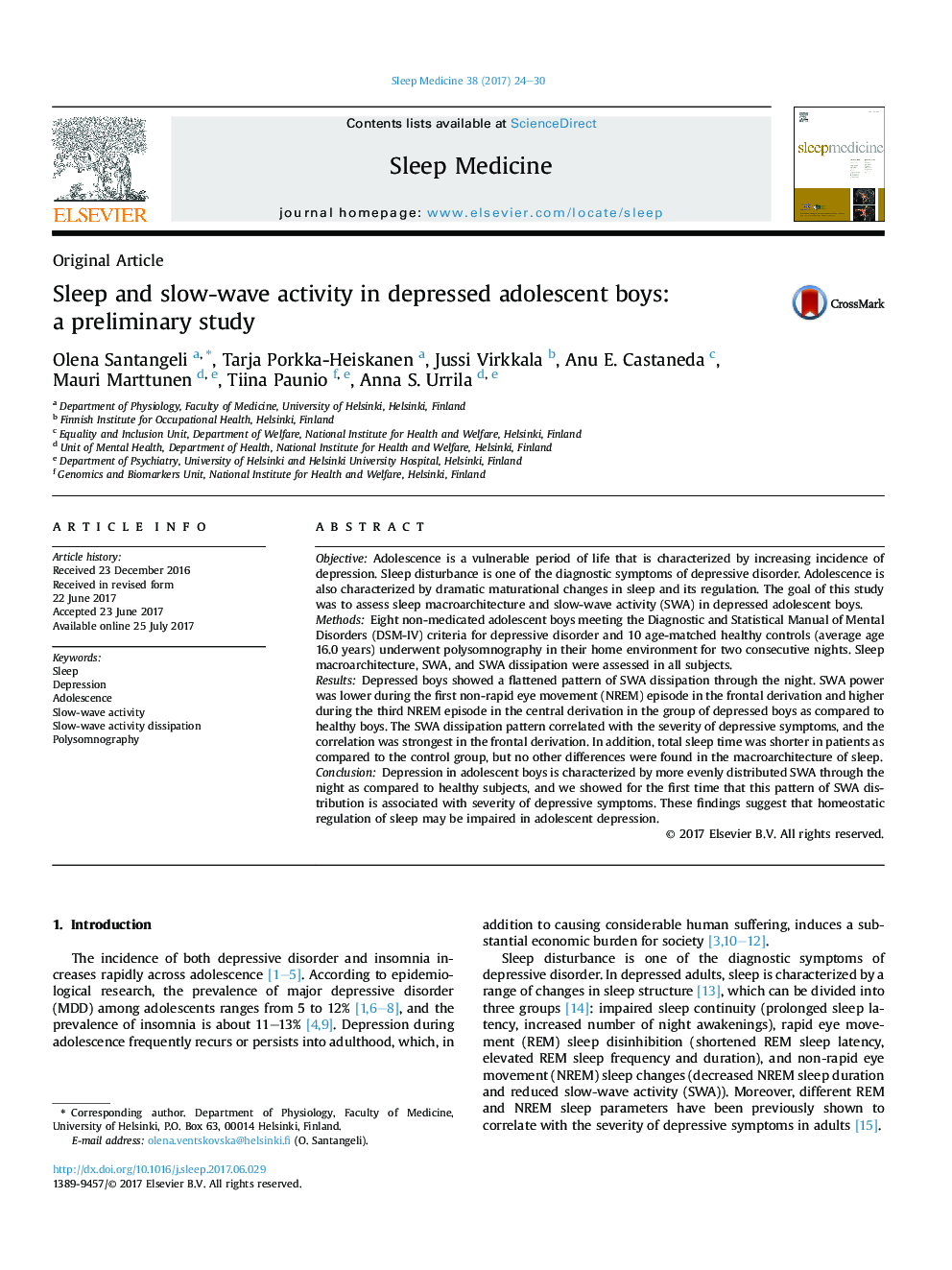| Article ID | Journal | Published Year | Pages | File Type |
|---|---|---|---|---|
| 5643521 | Sleep Medicine | 2017 | 7 Pages |
â¢Adolescent depression is characterized by lower SWA in the first NREM episode.â¢SWA is more evenly distributed through the night in depressed boys.â¢SWA dissipation pattern correlates with severity of depressive symptoms.â¢Differences are most pronounced in the frontal area.
ObjectiveAdolescence is a vulnerable period of life that is characterized by increasing incidence of depression. Sleep disturbance is one of the diagnostic symptoms of depressive disorder. Adolescence is also characterized by dramatic maturational changes in sleep and its regulation. The goal of this study was to assess sleep macroarchitecture and slow-wave activity (SWA) in depressed adolescent boys.MethodsEight non-medicated adolescent boys meeting the Diagnostic and Statistical Manual of Mental Disorders (DSM-IV) criteria for depressive disorder and 10 age-matched healthy controls (average age 16.0 years) underwent polysomnography in their home environment for two consecutive nights. Sleep macroarchitecture, SWA, and SWA dissipation were assessed in all subjects.ResultsDepressed boys showed a flattened pattern of SWA dissipation through the night. SWA power was lower during the first non-rapid eye movement (NREM) episode in the frontal derivation and higher during the third NREM episode in the central derivation in the group of depressed boys as compared to healthy boys. The SWA dissipation pattern correlated with the severity of depressive symptoms, and the correlation was strongest in the frontal derivation. In addition, total sleep time was shorter in patients as compared to the control group, but no other differences were found in the macroarchitecture of sleep.ConclusionDepression in adolescent boys is characterized by more evenly distributed SWA through the night as compared to healthy subjects, and we showed for the first time that this pattern of SWA distribution is associated with severity of depressive symptoms. These findings suggest that homeostatic regulation of sleep may be impaired in adolescent depression.
